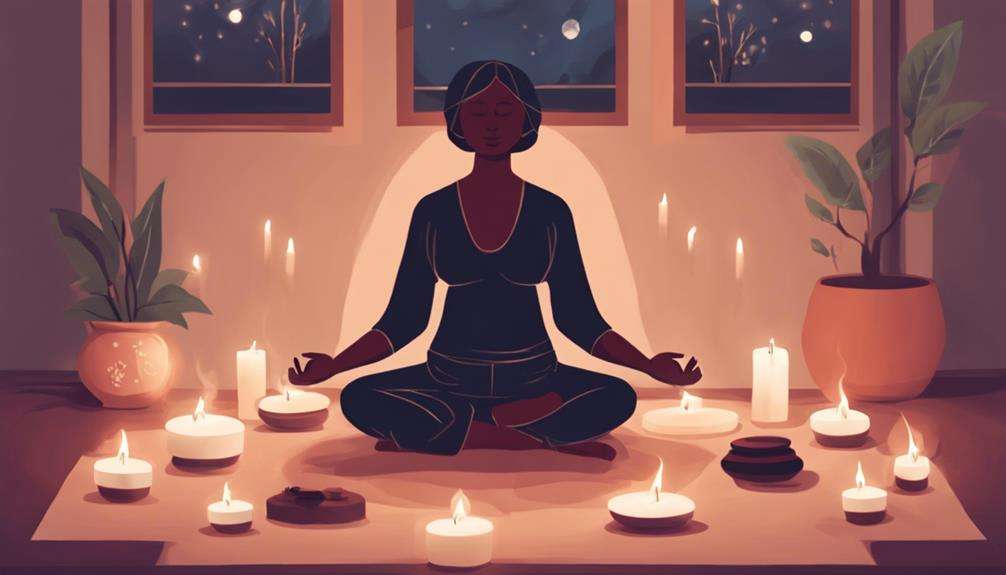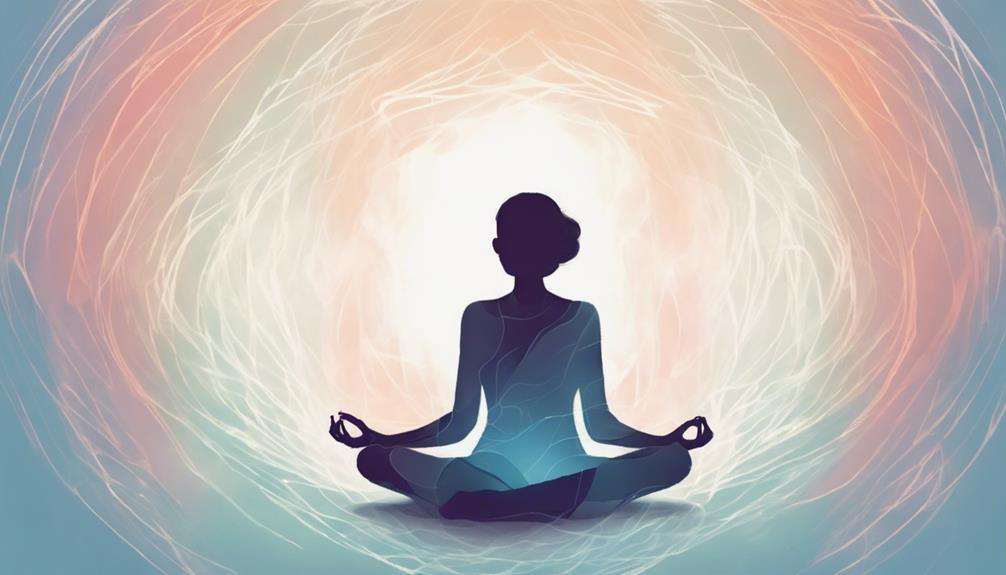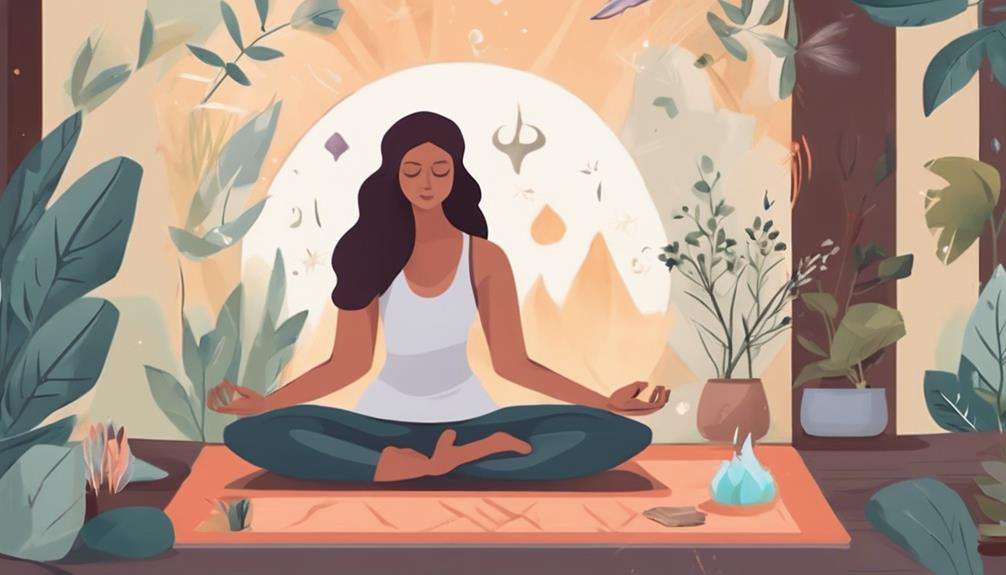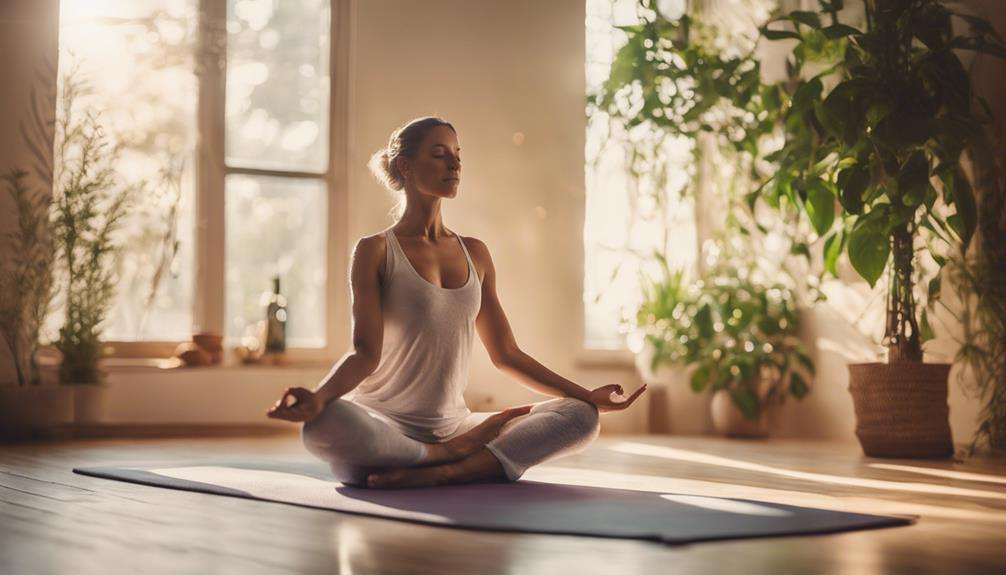You might not be aware that meditation can be a powerful tool in managing anxiety and panic attacks. The practice offers a way to calm the mind and regulate stress responses, leading to a reduction in the intensity and frequency of panic episodes.
By exploring how mindfulness meditation can help in observing feelings without judgment and building mental resilience, you can discover a valuable resource for navigating moments of heightened anxiety and panic.
Key Takeaways
- Meditation reduces symptoms of anxiety and panic attacks.
- Techniques like deep breathing and body scan promote relaxation.
- Mindfulness meditation fosters self-awareness and emotional regulation.
- Research shows daily meditation reduces anxiety and panic attack symptoms.
Understanding the Role of Meditation
By understanding the role of meditation, you can gain insight into how this practice effectively reduces symptoms of anxiety and panic attacks. Meditation acts as a powerful tool in managing stress and promoting relaxation responses within the body. Techniques like deep breathing and body scan help individuals focus on the present moment, alleviating anxious thoughts and promoting a sense of calmness.
Mindfulness meditation plays a crucial role in changing how individuals respond to stressors, fostering self-awareness and emotional regulation. Research has indicated that incorporating meditation into daily routines can significantly reduce symptoms of anxiety and panic attacks, particularly in individuals with anxiety disorders.
Benefits of Meditation for Anxiety
Understanding the profound benefits that meditation offers for alleviating anxiety and panic attacks is crucial in harnessing the power of this practice for mental well-being.
Mindfulness meditation, in particular, has been proven to reduce symptoms of anxiety and panic disorders effectively. By engaging in mindfulness practices, individuals can change their responses to stressful situations, ultimately reducing stress and worry. Studies have shown significant reductions in anxiety and depression scores following mindfulness meditation training, highlighting its efficacy in promoting mental health.
Furthermore, meditation can help manage stress levels and keep individuals centered, thereby reducing the likelihood of experiencing panic attacks. Embracing mindfulness practices not only provides short-term relief but also offers long-term benefits by diminishing the frequency and severity of panic attacks.
If you're struggling with anxiety or panic disorder, incorporating mindfulness meditation into your routine under the guidance of a healthcare professional can be a valuable tool in enhancing your mental well-being.
Types of Meditation Techniques
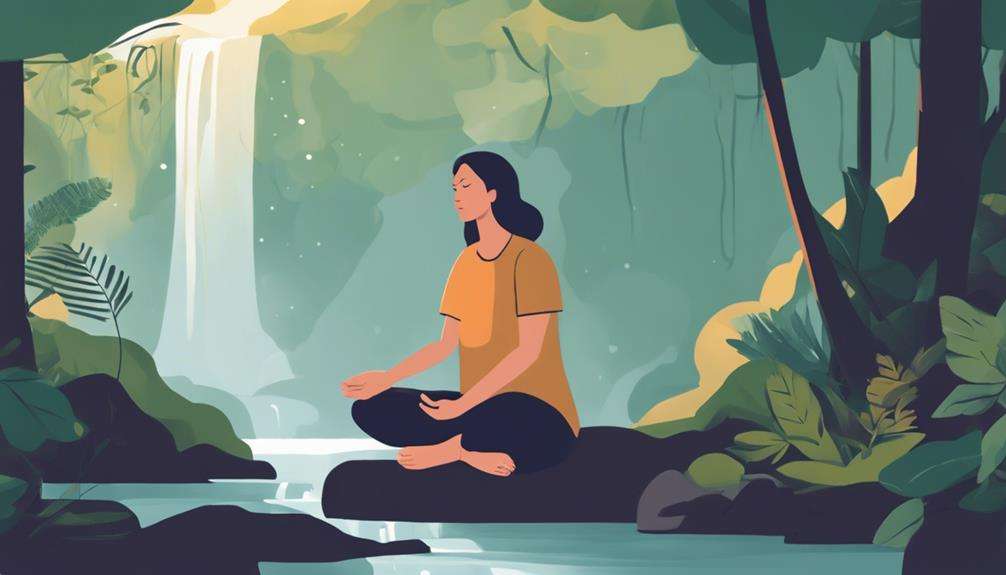
When exploring different meditation techniques for anxiety and panic attacks, it's essential to consider methods like:
- Breath Awareness Technique
- Body Scan Meditation
- Loving-Kindness Practice
These techniques can help you cultivate mindfulness, self-compassion, and relaxation, ultimately aiding in managing anxious feelings and stress.
Breath Awareness Technique
Focusing on your breath during meditation cultivates mindfulness and reduces anxiety by anchoring you in the present moment.
Breath awareness meditation, centered on the sensation of breathing, aids in calming the mind, regulating emotions, and promoting relaxation amidst stress or panic. This technique enables individuals to stay grounded, alleviating symptoms of anxiety and panic attacks.
Studies indicate that practicing breath awareness can lower physiological responses to stress, such as heart rate and cortisol levels. Regular engagement with this method enhances self-awareness, improves emotional regulation, and fortifies resilience against anxiety triggers.
Body Scan Meditation
To begin exploring the technique of Body Scan Meditation, consider systematically directing your awareness to various parts of your body for relaxation and mindfulness. This practice involves observing physical sensations in a non-judgmental manner, aiming to reduce muscle tension, promote awareness of the body, and calm the mind.
Body scan meditation can be performed while lying down or sitting comfortably, making it accessible to a wide range of individuals. By incorporating this technique into your routine, you can enhance mindfulness, decrease anxiety levels, and improve overall well-being.
Regular practice of body scan meditation allows you to connect with your body, release stress, and cultivate a sense of peace and tranquility within yourself.
Loving-Kindness Practice
Loving-kindness meditation is a practice focused on cultivating compassion and kindness towards oneself and others. It is known for its ability to generate positive emotions like love, empathy, and goodwill. This type of meditation can significantly impact emotional well-being, especially for those dealing with anxiety and panic attacks.
Through loving-kindness practice, individuals can enhance their self-compassion, improve relationships, and foster a sense of connection with others. Research suggests that regular engagement in loving-kindness meditation not only reduces anxiety symptoms but also increases overall positivity.
By incorporating this form of meditation into your routine, you may develop a more compassionate and empathetic outlook on life.
- Cultivates compassion and kindness
- Generates positive emotions
- Reduces anxiety symptoms
- Enhances self-compassion
- Fosters emotional well-being
Practical Meditation Tips for Anxiety

For practical meditation tips to manage anxiety, focus on incorporating breathing techniques and mindfulness exercises.
Deep breathing can help regulate your body's stress response, while mindfulness allows you to observe anxious thoughts without judgment.
Breathing Techniques for Anxiety
Breathing techniques play a crucial role in managing anxiety by calming the body's stress response and promoting relaxation during anxious episodes.
- Diaphragmatic breathing: Helps calm the stress response by engaging the diaphragm for deep breaths.
- Controlled breathing: Slows heart rate, reduces tension, and aids in managing anxiety symptoms effectively.
- 4-7-8 breathing method: Inhaling for 4 seconds, holding for 7 seconds, and exhaling for 8 seconds induces calmness.
- Mindful breathing: Focuses on the present moment, diverting attention from anxious thoughts and promoting peace.
- Research: Consistent practice lowers cortisol levels, decreases anxiety, and enhances overall well-being.
Mindfulness Exercises for Panic
Engaging in mindfulness exercises can significantly aid in managing panic attacks and anxiety effectively. Practices such as deep breathing, body scan meditation, and walking meditation help reduce symptoms by grounding you in the present moment.
Five senses meditation focuses on sensory stimuli, providing a way to manage physical sensations during moments of panic. Guided meditations from apps like Headspace and Calm offer tailored support for panic attacks, promoting relaxation.
Mantra meditation, which involves chanting or repeating a phrase, can enhance focus and alleviate stress when experiencing anxiety and panic. By incorporating mindfulness into your daily routine, you can better observe and manage symptoms, fostering a harmonious balance between body and mind.
Building Meditation Skills for Calmness
To cultivate a sense of calmness through meditation, you must focus on developing essential skills such as attention, relaxation, and mindfulness in quiet environments. By incorporating these foundational elements into your meditation practice, you can effectively build the necessary skills for managing anxiety and panic attacks. Here are some key strategies to enhance your meditation skills:
- Practice focused attention to train your mind to stay present and centered.
- Embrace relaxation techniques like deep breathing to calm your body and mind.
- Explore different meditation methods to find what works best for you.
- Reflect on the benefits of meditation to motivate and reinforce your practice.
- Cultivate a non-judgmental attitude towards your thoughts and emotions during meditation sessions.
Integrating Meditation Into Daily Life
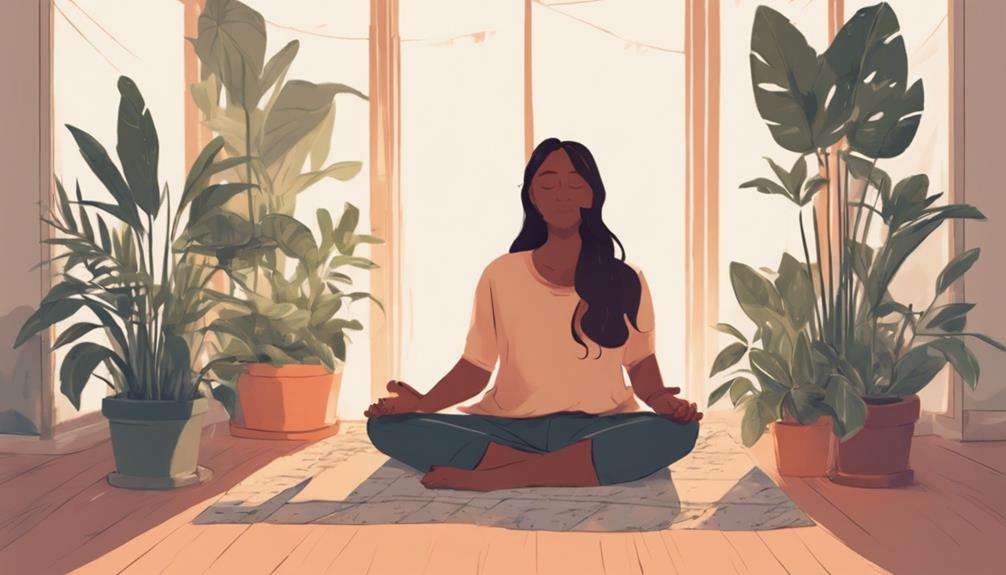
Integrating meditation into your daily routine requires consistency and dedication to experience its long-term benefits on anxiety and panic symptoms. Setting aside even a few minutes each day for meditation practice can help reduce anxiety and manage panic symptoms over time. Consistency is key in rewiring the brain to alleviate these symptoms gradually.
Starting with simple mindfulness techniques like focused breathing can make it easier to build a habit of daily practice. Patience and persistence are essential when incorporating meditation into your routine, as the full advantages of improved mental well-being may take time to manifest.
Creating a peaceful and comfortable space for meditation at home can enhance the effectiveness of your daily practice in managing anxiety and panic attacks. Remember that integrating meditation into your daily life is a journey that can lead to significant improvements in your overall mental health and well-being.
Frequently Asked Questions
Does Meditation Help With Anxiety and Panic Attacks?
Meditation, particularly mindfulness techniques, breathing exercises, and relaxation responses, can be beneficial for managing anxiety and panic attacks. These practices help you focus, relax, and build resilience, reducing the likelihood and severity of such episodes.
What Is the 3 3 3 Rule for Anxiety?
The 3 3 3 rule for anxiety involves identifying three things you see, hear, and feel. Engaging multiple senses interrupts anxious thoughts, reducing panic intensity. This grounding technique is a simple, effective mindfulness practice to shift focus.
How Meditation Cured My Anxiety?
Meditation offered a path to healing anxiety through personal experience. Techniques centered on mental health, the mind-body connection, and coping strategies. The practice fostered a relaxation response, aided stress management, and improved emotional regulation, facilitating the healing process.
How Long Does It Take for Meditation to Reduce Anxiety?
You might think it's too good to be true, but meditation can start calming your anxiety in just a few minutes. With regular practice, you'll notice a significant reduction in anxiety levels over a few weeks.
Conclusion
Congratulations, you've unlocked the secret to taming anxiety and panic attacks through meditation. By embracing mindfulness and building your meditation skills, you've equipped yourself with a powerful tool to combat stress and find inner peace.
So next time panic comes knocking, remember to breathe, focus, and let meditation guide you back to calmness. Embrace the power of your mind and watch those panic attacks shrink in the face of your newfound serenity.

